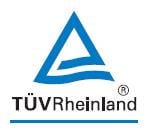|
|
Melanie Schubert Regulatory and Compliance Manager, Retail Melanie is a board approved food chemist, who received her Master's Degree from a leading German University. She has been responsible for food contact material services at the TÜV Rheinland Shanghai lab for the past 5 years. In 2015, she joined the North America Retail Team as a Regulatory and Compliance Manager for food contact articles and other chemical services. |
FOOD CONTACT SAFETY LABELS
First up is the stylized fork and a wine glass, the international symbol for food-safe materials:
|
|
Most global food contact regulations allow manufacturers to use this symbol on a voluntary basis, with one exception. European Union legislation requires one of three indications placed on products, which at the stage of sale, are not in contact with food yet (houseware articles). These items must be labeled to either: 1) indicate their intended use by the words “for food contact,” 2) indicate a specific application, i.e. “soup spoon,” or 3) include the symbol above. |
In addition to the basic claim of food contact safety, it has recently become popular for companies to voluntarily indicate their product is free of certain substances. The most common example is the “BPA free” label on plastic materials. Also you can frequently see non-stick coated cookware and bakeware labelled as “PFOA free”. These labels are not mandatory, nor is there a universally-accepted icon, so the actual label may vary from one product to another. If a food contact product does not have one of these labels, it is not necessarily an indication that the product includes this chemical. For example, basically all non-PC (polycarbonate) plastics are naturally free of BPA, even without making an explicit claim.
PRODUCT PERFORMANCE LABELS
Performance claims are used to indicate what usage and wear-and-tear a product can withstand. Thereby they protect the consumer from misusage of the product and possibly related exposure to chemical or mechanical hazards. They can be provided either as graphic symbols or in written words. As with the “BPA/PFOA free” labels, there is unfortunately no universally approved system for indicating performance (yet).
Microwave Safe:
 |
OR |  |
OR |  |
Wavy radiation lines are the constant for symbols indicating a product can go in the microwave. Sometimes these may come with a temperature or wattage limitation, indicating the product should be used only on ‘low’ settings or may not perform as well in a larger, high-powered microwave. In some cases—and this seems more common in the EU than the U.S.—the instruction “For reheating only” may be included, indicating the product should not be used in microwave cooking.
Freezer Safe:
|
|
A snowflake is probably the most easily recognizable indication of cold, which makes it the perfect symbol to mark freezer safe kitchenware. Some variations might indicate minimum temperature limitations to prevent mechanical damage to the product. |
Dishwasher Safe:
This one may be the most confusing, as there are a number of variations:
 |
 |
 |
|
|
| Official symbol used in the European market for housewares which comply with the dishwasher requirement according to EN 12875-1. The number indicated on top of the symbol reflects the dishwasher cycles the product was proven to withstand. | Common examples of dishwasher suitable symbols used by the industry. However, these symbols again are not unified and therefore don’t reflect one specific performance level the product was proven to meet. Some plastic articles may be only suitable for the top rack, since many dishwashers have the heating element on the bottom and might therefore cause deformation of some plastic materials. There is no unified symbol to indicate this limitation. Many times it’s emphasized as additional language next to the symbol or in the instruction manual. Luckily, new dishwasher models now often come with a different drying technology, which will make it indifferent if the article is placed on the top or bottom rack. | |||
 |
 |
 |
As not every cookware works properly with every kind of heating source, it is crucial to indicate the suitability of the individual cookware. The European Union standardized the marking by means of the standard EN 14916. The above examples from left to right indicate the cookware is appropriate for induction cooktops, electric cooktops, or gas cooktops. For example, because induction only works with ferrous (magnetic) metals, it is important to look for this kind of information on your cookware.
In addition to all of the above symbols, it is important to check for further instructions or restrictions of the article. These can include limitations concerning the type of food to be used with (e.g. not to be brought in contact with acidic foodstuffs) or temperature limitations for cooking or baking equipment.
RECYCLING LABELS
Recycling labels have been implemented in many countries in order to simplify the recycling process, whether it is mandated or voluntary. In the U.S., standard ASTM D7611 indicates the different recycling symbols for different plastic or resin materials. The following are the categories, and some typical examples of food contact packages using those types of resins.

The application of the recycling code is currently mandatory in 39 U.S. States. Other countries, such as Australia or Canada, have implemented the code as well, but so far only on a voluntary basis.
Interested in more resources?
As a leading provider of technical services worldwide, TÜV Rheinland can expedite global market access more efficiently and effectively. Whether you are a retailer or manufacturer, we help protect your brand through product testing and certification against regulatory requirements, international quality standards and brand specifications. Consumers can be assured that a product certified by TÜV Rheinland is a safe, reliable product. Our goal is to make the world a safer place today, tomorrow and in the future by helping our clients reach the next level of excellence in their quality assurance programs.







